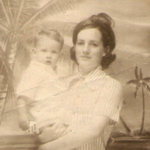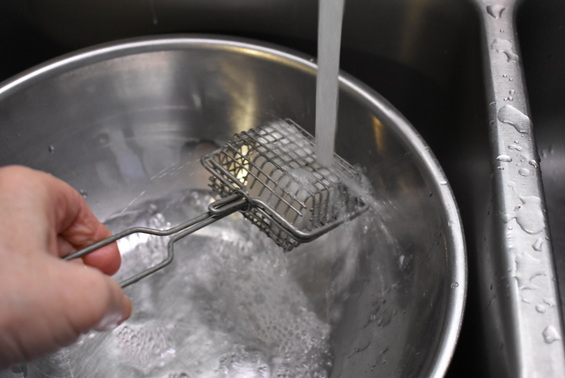
We talked about the dish scraper last post and now about the soap shaker or soap saver depending on when we are talking. I used to run water over the soap in the shaker but I do not do this after learning more.
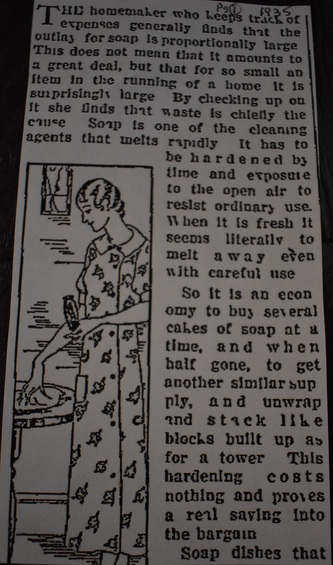
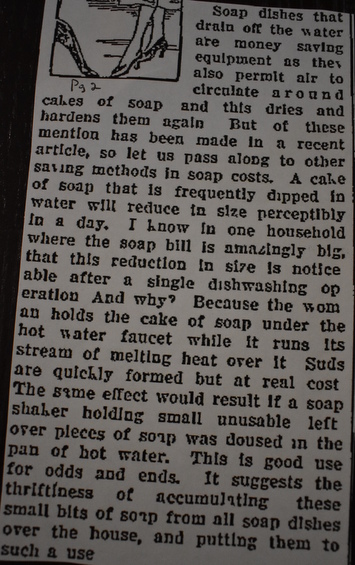
The good thing about the soap shaker/saver is that the soap that goes into the water is dissolved swishing and there is no need to boil or wait for it to dissolve.
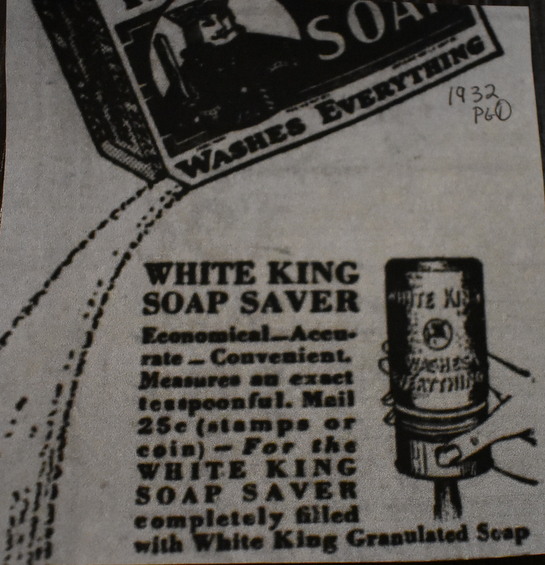
Here is a soap saver.

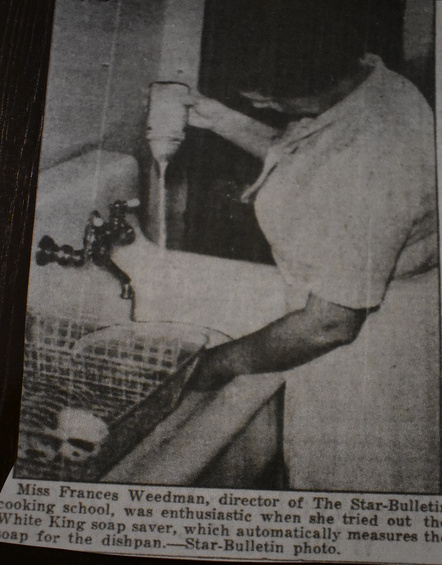
Here is a soap saver being used. This photo is an example of how many people dressed in the 30s and 40s. In some of my 1940s posts I post photos of ordinary people that do not necessarily dress the fads. Miss Weedman was the director of a cooking school.

Since we mentioned cooking, I saw this and I wanted to share a nifty idea in 1925 of how someone added a hinged shelf to a closet shelf. Explained below.
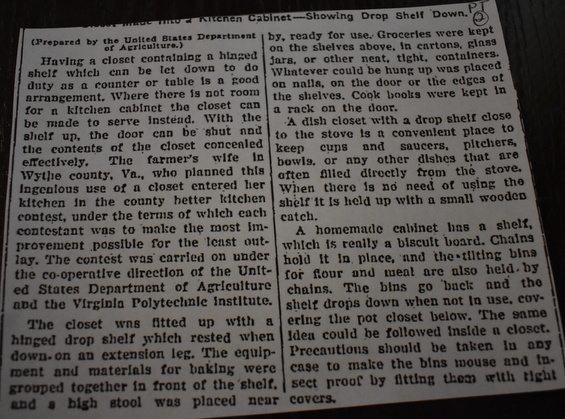
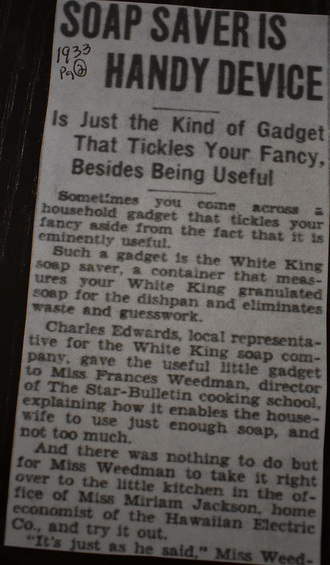

These things are exciting to me because I lived a time early on without a dishwasher and even a time without a washer much less a dryer. Then I live a time when I had all three and then realized I did not want things that cost extra money to run and those things you have to buy special soap to run.
I have been in search of that one soap that does all, the safe soap with few ingredients. I can make my own soap now, I make a pure coconut soap but I still have other soap from all the soap trying until I was pressed to trying to make my own.
I see in the ads of the past where they would guilt people into buying things trying to embarrass someone because in the past it seems to matter more of what people thought about you. People were expected to look presentable at all times and as I said in the other post do things a certain way.
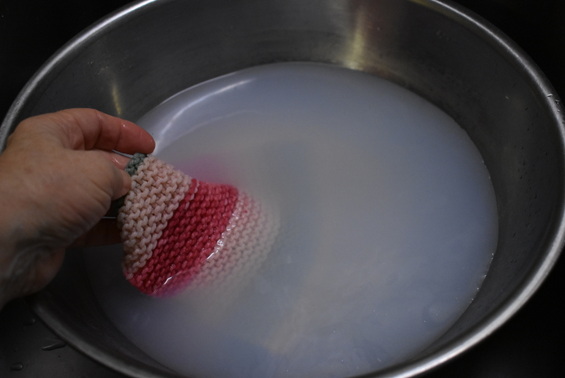
So then came the discovery.
I read an article that led me to the discovery that one of the glycerin issues with real soap for washing dishes giving the oily feel is due to using too much.
It takes "Very" little soap for washing dishes. For greasy things it takes soaping a cloth different.
The photo above, the milky is too much soap. Depending on what year or era we are discussing is what kind of soap was used. Powdered soap came later. It went from the bar soap to grated soap, to soap that came grated, then used laundry soap and then the soap saver came back to use up the smaller soap pieces. In the past the soap was not synthetic until a bit later on as we will discover. There was lye soap and castile soap. I found a article in a U.S. paper recently that happened to be the year 1884 about the castile soap from Europe and discussed the Castile soap from France.
Several years ago when I went on my soap obsession and I tried soap from around the world and Castile soap from France was one of them. Actually several.
So I have learned a better way with this recent research and I having been experimenting with good success.

After much practice, this is more the color the water should look like. This will wash glasses and dishes that have been scraped properly. My dishes were becoming more squeeky clean. Remember, we are using what I call real soap, meaning non synthetic soap but castile soap such as Kirks castile soap, dr bronners or lye soap such as grandmas lye soap and other good lye soaps. I love mopping floors with the lye soap, they are so fresh and clean after mopping and no chemicals. All soap has lye but there is castile made with olive, coconut, palm etc. What we call lye soap is make with tallow, which is fat. It is my opinion they are both good soap.
The photo above I swished the soap two Mississippi's. By that I mean take the bar of soap or a soap saver with a piece of a bar of soap in it, either one, and swish or stir in the water quickly and say, one Mississippi, two Mississippi quickly. The soap saver is good because I can use very hot water without burning my hands. You can also use tongs to hold the soap and swish.
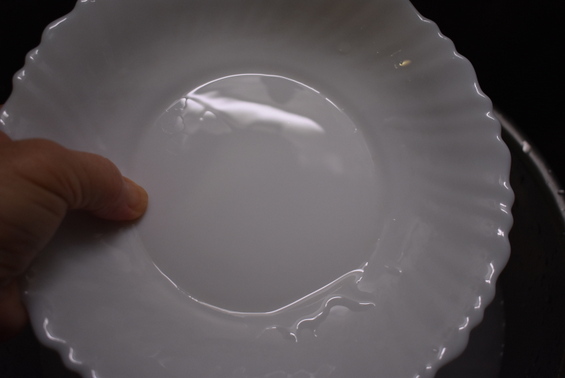
The dishes get very clean.
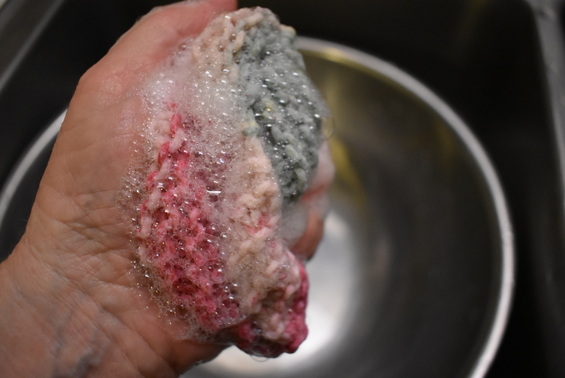
Then there are things that are greasy and a dish cloth rubbed over the bar soap will cause suds that will help to get the greasy off it takes practice. Rinse the cloth and squeeze it out each time you do this with greasy things.
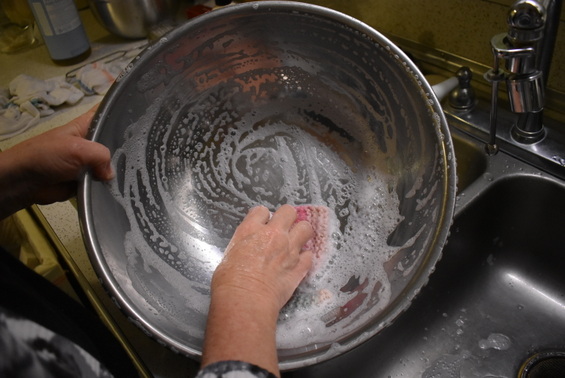
I tried Dr. Bronners baby liquid soap, Kirks Castile unscented, Dr. Bronners bar and my soap. If I did not make our soap my best choice for dishwashing was Kirks unscented castile soap. This is what it looks like to just soap the rag, rinse the bowl and the rag. It gets squeaky clean. If I am out of my soap I will use kirks, I also grate it to make laundry powder or rub it on a item to be washed.
I do still keep the blue stuff to put down the drain for grease but now that we are going back further in time and see the precautions they did to remove food and grease I will get better with this.
So to back up just a bit...
The last post, called how did they do that, we see in a newspaper clipping that there were formal steps to washing dishes. We do not need to be rigid and make our life miserable washing dishes, we can actually enjoy doing this. However, there are steps that just make sense such as after scraping and stacking the dishes, wash the delicate dishes and glasses first. Then wash the silverware or cutlery, plates and bowls then the pots and pans. A modern thing I do is spray a mist of water over the plates before stacking them to wash but this has never been mentioned in the past and since they did not have plastic goods the only sprayer I know of is a rubber atomizer.
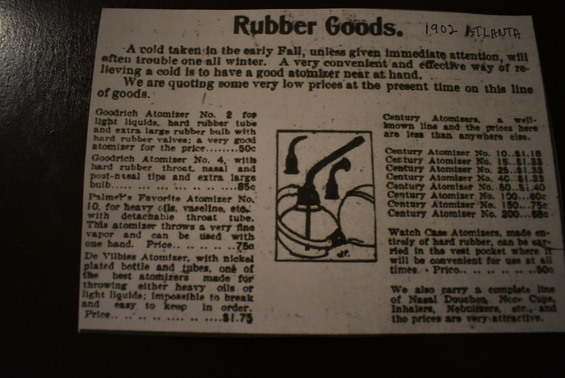
1902, Atlanta, Atomizer
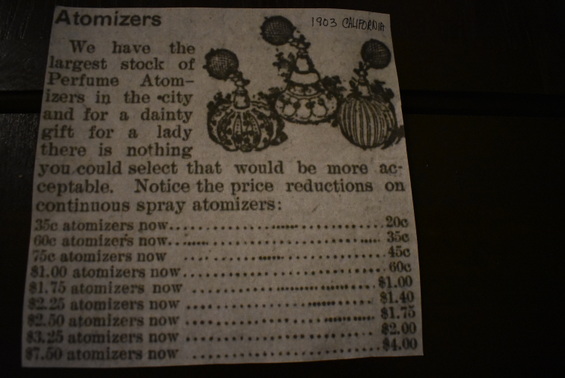
1903 Atomizers California

Then there is the topic about being sanitary and disposal.
I now understand the importance of those sink strainers I have seen in Antique stores.
The many articles I read told that food was scraped off the plates, pots and pans into a strainer. Some people did not have sewers or drains and some did but either way it still is not good to let grease and particles go down the drain.
So the Sanitary sink pail above came out and was used because it strained the solids which went into the bucket

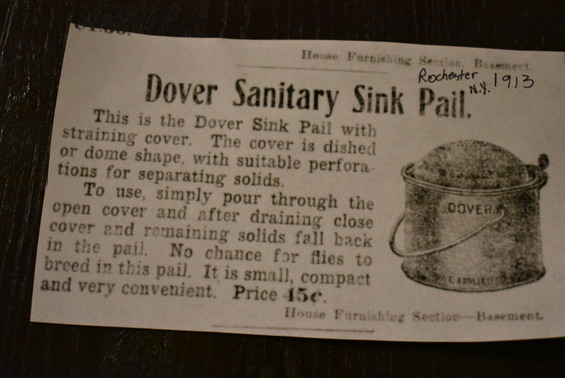

Describing the pail.
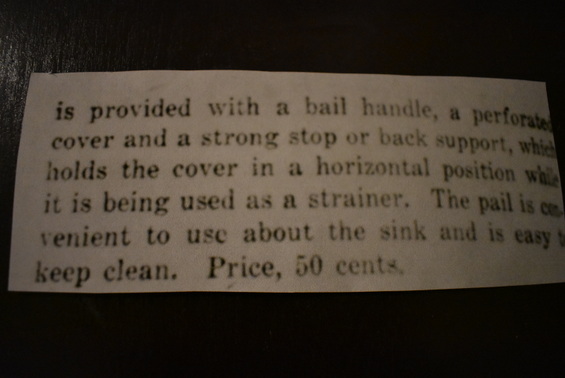
I could not figure out this sanitary sink pail until I found another article explaining further that is a small pail that sits in the sink. If the sink has a drain the liquid goes down the drain and when you flip the top back the solids go in the pail. I am guessing if there is no drain then a bowl or something would be placed under the strainer for the liquids.
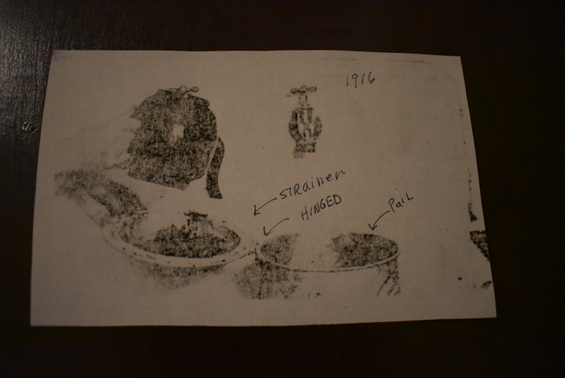
Some pictures are so faded you can hardly see. This is 1916 and someone is holding a teapot upside down emptying into the strainer that is flipped back from the pail.
Just a note, seeing the photo above, there are so many things we are losing and we are getting so far away from this time that our loved ones lived. It makes me want to stand on a mountain or cell tower and yell to people, STOP!!! SLOW DOWN! PUT YOUR PHONE DOWN AND LOOK UP AT ME! THERE CAN BE A MORE SIMPLE WAY TO LIVE THat feels right. really...we just have to try. The world is not going in the right direction and it does not have to be this way.
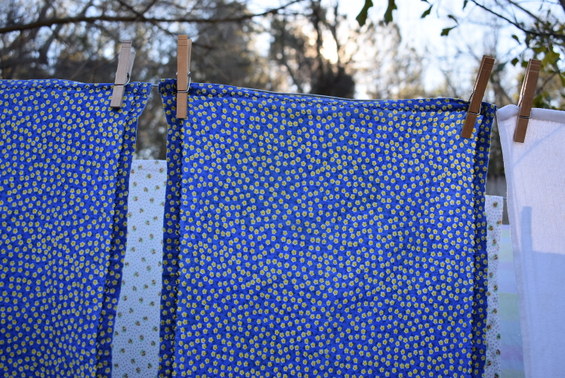
Ok, let me regroup again. I think my clothesline pictures will have to be my stabilizer from now on to help keep me on track.
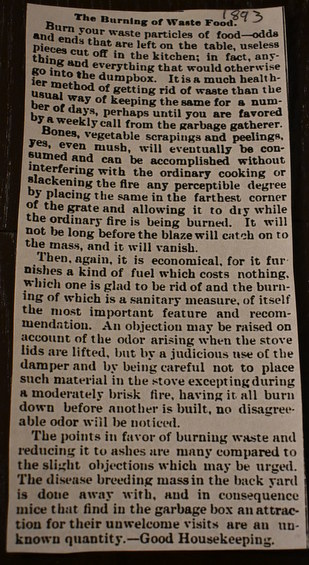
People knew how to take care of their waste. Depending on where you lived, rural or city. Some cities people still had farm animals because people used horse and buggy in the city. We will see this in the journal of Arthur and Nellie.
Many times the scraps were fed to chickens, hogs and or burned.
I read an article that showed the problems of becoming more modern and when the stoves started changing such as when the wood burning stove was replaced by a modern stove, the kitchen waste could not be burned. Then people started setting up burn barrels.
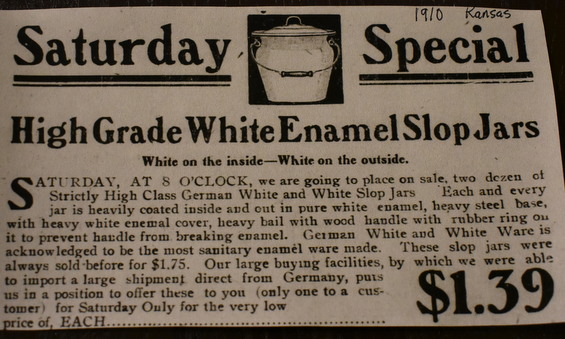
The slop jar which looks like a bucket had several uses. Some slop jars were used for washbowl waste, kitchen liquid waste if they did not have a sink pail. The main use for a slop jar was to urinate or defecate. Or the contents of the chamber pot was poured into to be carried out.
I am trying to show history of how families lived early on because our goal this year is to live something like they did in 1932 without some of the extra expenses we have today. We need to know what they had and did not have to understand the simple life.
We need to see what things were available and the items used in the home. It is my opinion that people did not change quickly from what they were used to. It would have been more likely the young people, young adults, those we see in the old photos and old movies that we have seen.
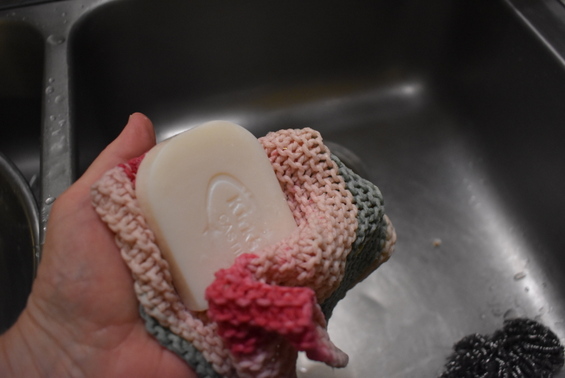
I can imagine my Grandmother being much the same as she always was as she was a simple, caring woman than never went with fads. Clothing was practical and many ladies sewed their own clothing. This is not just soap, it is trying to find the one practical thing that helps the budget.
To my surprise when researching the catalogs is how many things were available and how income was going up and the 20's were roaring and booming but once we got into the late 20's everything started going backwards. Just by what I have read I have the feeling if people had been more steady and sensible like my grandparents the great depression may have not happened but people have a tendency to live above their means instead of living below their means.
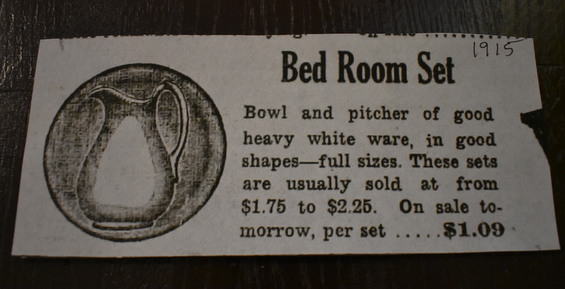
There is something that feels right to want to live simple and only use what we need.
The book I am currently reading is called, The Great Depression : A Diary by Benjamin Roth
It is a diary written by Benjamin Roth, a young lawyer that decided to write down his impressions while he lived through the great depression.
It has given me the chills at times of what people went through and I also see things today that worry me while reading this book which empowers me to do more to shore up our budget.

I got up and did a few things and then came back to finish this post but I had folded a cracker box to put in recycle and I got back up as I thought, no, I need that for scrapers! So I got back up and cut it up as I will other boxes.
I have a cracker recipe that I will be trying so that may be the end of store bought crackers. Cheerios and crackers are our only processed junk food that we buy now, I have not figured out how to make Cheerios.
Grandma Donna
